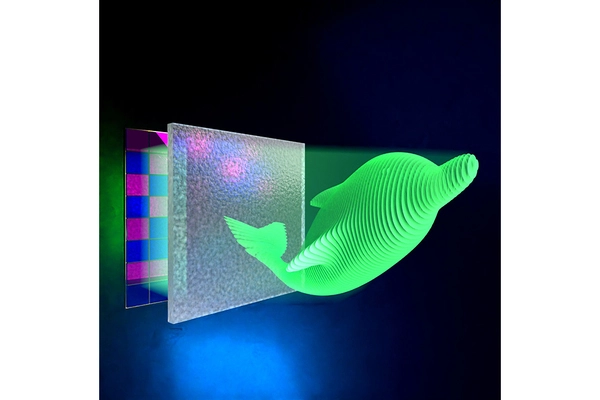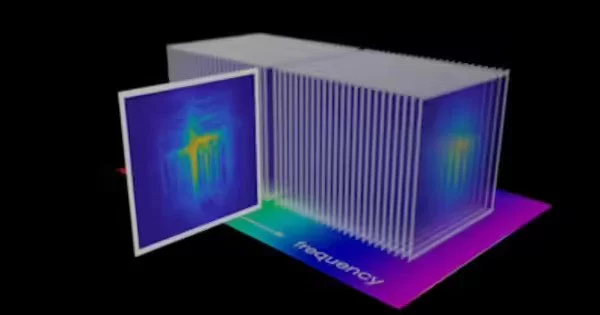Indeed, technological advancements have paved the way for more realistic 3D holograms, which improve the immersive experience of virtual reality (VR) and other applications. Researchers have created a new method for producing dynamic ultrahigh-density 3D holographic projections. This type of hologram could enable realistic representations of the world around us for use in virtual reality and other applications by packing more details into a 3D image.
“A 3D hologram can present real 3D scenes with continuous and fine features,” said Lei Gong, who led a team of researchers from China’s University of Science and Technology. “For virtual reality, our method could be used with headset-based holographic displays to greatly improve viewing angles, which would enhance the 3D viewing experience. It could also provide better 3D visuals without requiring a headset.”
To create a realistic-looking holographic display of 3D objects, images with a high pixel resolution must be projected onto a large number of successive planes, or layers, that are closely spaced. This results in high depth resolution, which is necessary for providing depth cues that make the hologram appear three-dimensional.
Our new method overcomes two long-existing bottlenecks in current digital holographic techniques – low axial resolution and high interplane crosstalk – that prevent fine depth control of the hologram and thus limit the quality of the 3D display.
Lei Gong
Gong’s team and Chengwei Qiu’s research team at the National University of Singapore describe their new approach, called three-dimensional scattering-assisted dynamic holography (3D-SDH), in Optica, Optica Publishing Group’s journal for high-impact research. They demonstrate that it can achieve depth resolutions that are more than three orders of magnitude higher than current methods for multiplane holographic projection.
“Our new method overcomes two long-existing bottlenecks in current digital holographic techniques – low axial resolution and high interplane crosstalk – that prevent fine depth control of the hologram and thus limit the quality of the 3D display,” said Gong. “Our approach could also improve holography-based optical encryption by allowing more data to be encrypted in the hologram.”

Technology advance paves way to more realistic 3D holograms for virtual reality and more
Producing more detailed holograms
A spatial light modulator (SLM) is typically used to modulate the intensity and/or phase of a light beam when creating a dynamic holographic projection. However, the quality of today’s holograms is limited because current SLM technology only allows a few low-resolution images to be projected onto separate planes with low-depth resolution.
To address this issue, the researchers combined an SLM with a diffuser, allowing multiple image planes to be separated by a much smaller amount without being constrained by the SLM’s properties. This setup enables ultrahigh-density 3D holographic projection by suppressing crosstalk between planes and utilizing light scattering and wavefront shaping.
To test the new method, the researchers first used simulations to show that it could produce 3D reconstructions with a much smaller depth interval between each plane. For example, they were able to project a 3D rocket model with 125 successive image planes at a depth interval of 0.96 mm in a single 1000×1000-pixel hologram, compared to 32 image planes with a depth interval of 3.75 mm using another recently developed approach known as random vector-based computer-generated holography.
They built a prototype 3D-SDH projector to create dynamic 3D projections and compared it to a conventional state-of-the-art setup for 3D Fresnel computer-generated holography to validate the concept experimentally. They demonstrated that 3D-SDH outperformed conventional SDH by more than three orders of magnitude in axial resolution.
The researchers’ 3D holograms are all point-cloud 3D images, which means they can’t show the solid body of a 3D object. Eventually, the researchers hope to be able to project a collection of 3D objects with a hologram, which will necessitate a higher pixel-count hologram and new algorithms.





